![]() If you've ever bought a Yocto-PT100, you've probably noticed that it doesn't come with a PT100 probe, and that these probes are pretty expensive. But did you know that it's possible to make one quite easily and cheaply?
If you've ever bought a Yocto-PT100, you've probably noticed that it doesn't come with a PT100 probe, and that these probes are pretty expensive. But did you know that it's possible to make one quite easily and cheaply?
A quick reminder about PT100 sensors
A PT100 is basically a resistor that changes value according to temperature. Typically, its resistance is 100Ω at 0░C and 138.50Ω at 100░C. Finding out out the temperature where a PT100 is located is a matter of measuring the resistance of the PT100 and deducing the temperature thanks to specific tables. This is what the Yocto-PT100 does, using four wires. But how does it measure resistance? By using Ohm's Law, which states that the voltage across a resistive component is equal to its resistance times the current flowing through it, i.e. V = I x R or R = V / I.
So, to measure the resistance of a PT100, all you have to do is pass a known current through it. But we'd like to avoid measuring the resistance of the wires connecting the PT100 to the measuring device. In fact, the Kirchhoff's first law stipulates that the voltage across a set of resistive components connected in series is the sum of the voltages across each of its components, which includes the wires. As it happens, in the case we're interested in, the resistance of the wires is not necessarily negligible.
Actually there is a trick. The voltage across a resistive component is proportional to the current, so if there's no current, there's no voltage. This is why we use two pairs of wires to measure a PT100. One pair to carry the current and a second to measure the voltage across the PT100. The current created by the voltage measurement is small enough to be neglected.
Ok, theory done.
Building a probe
Rather than buying a complete four-wire probe, it's possible to buy just the Pt100 sensor alone, and this kind of component is usually only worth a few dollars.
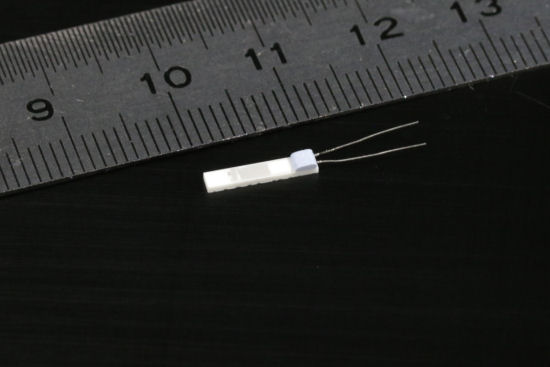
A naked PT100 sensor.
The first thing to do is to solder a pair of wires to each of the component's legs. Make sure you handle the PT100 component with care, as it's quite fragile.
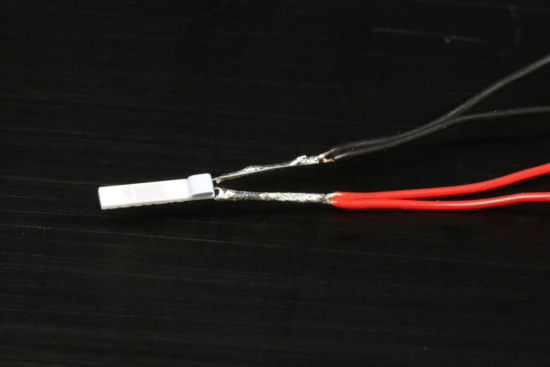
Four wires are soldered.
Next, insulate the soldered joints with a little heat-shrink tubing.
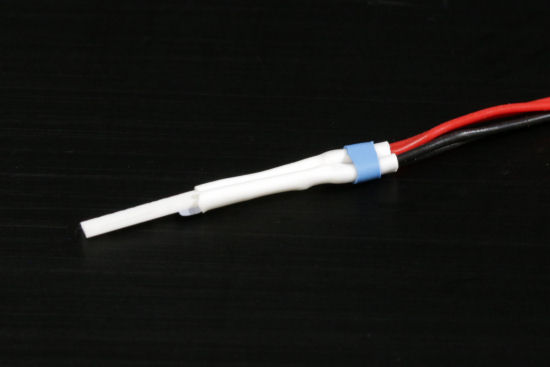
solder joint insulation with heat shrink tube
In theory, your sensor is ready, and you can even try it out straight away. But it's still impractical to use and, above all, fragile. Hence the idea of installing it at the end of an aluminum tube.
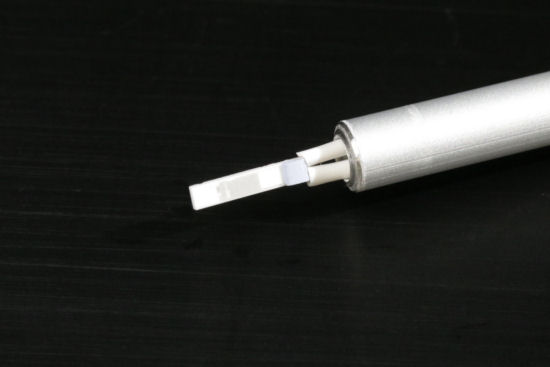
We'll attach the sendor at the ned of an aluminum tube.
To do this, wrap a piece of masking tape around the end of the tube, letting it stick out a few millimeters. Extend the sensor as far as possible, keeping the wires and heat-shrink tubing inside the tube. Secure with a few drops of epoxy glue, keeping the sensor centered and aligned with the tube if possible (easier said than done). Avoid getting glue on the sensor. Once the glue is dry, remove the masking tape.
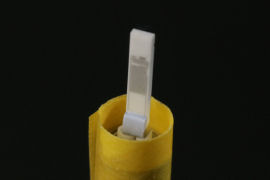
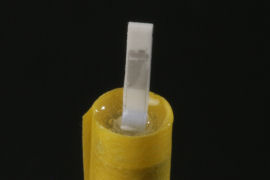
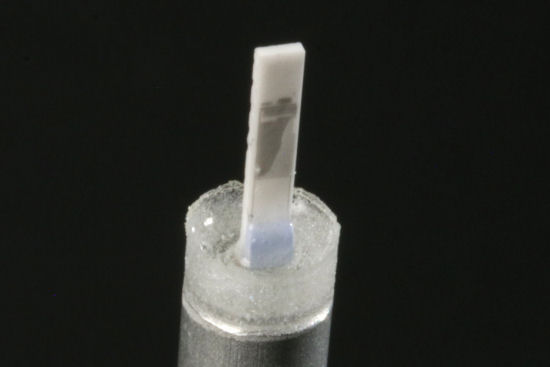
Attaching the sensor.
Now it's time to protect the sensor from mechanical damage. The idea is to place a small cage around it, allowing air to circulate easily and reach the sensor. If you have the right tools, you can afford the luxury of machining one in aluminum, otherwise you can fall back on 3D printing.
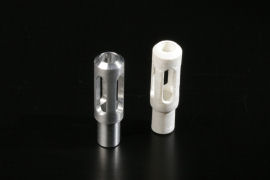
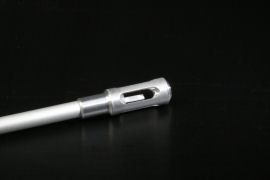
Sensor protection.
Note that this cage is likely to add a little inertia to your sensor, especially the aluminum one.
If you intend to install your sensor outdoors, consider applying a small coat of varnish to the sensor. The ideal is probably one of those varnishes used for conformal coating.
Make sure the sun doesn't shine directly on the sensor, otherwise your measurements will be distorted.
Conclusion
So, in just a few tens of minutes and for just a few Dollars, you can build PT100 probes of a size exactly suited to your application. Of course, you won't get the certificate of conformity that usually goes with high-end commercial probes, but in most cases, you can do without it.
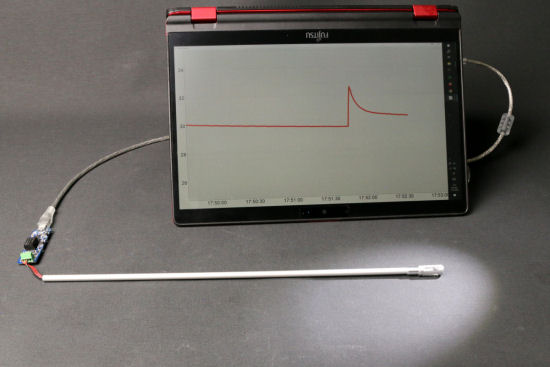
Tadaa! it works.


